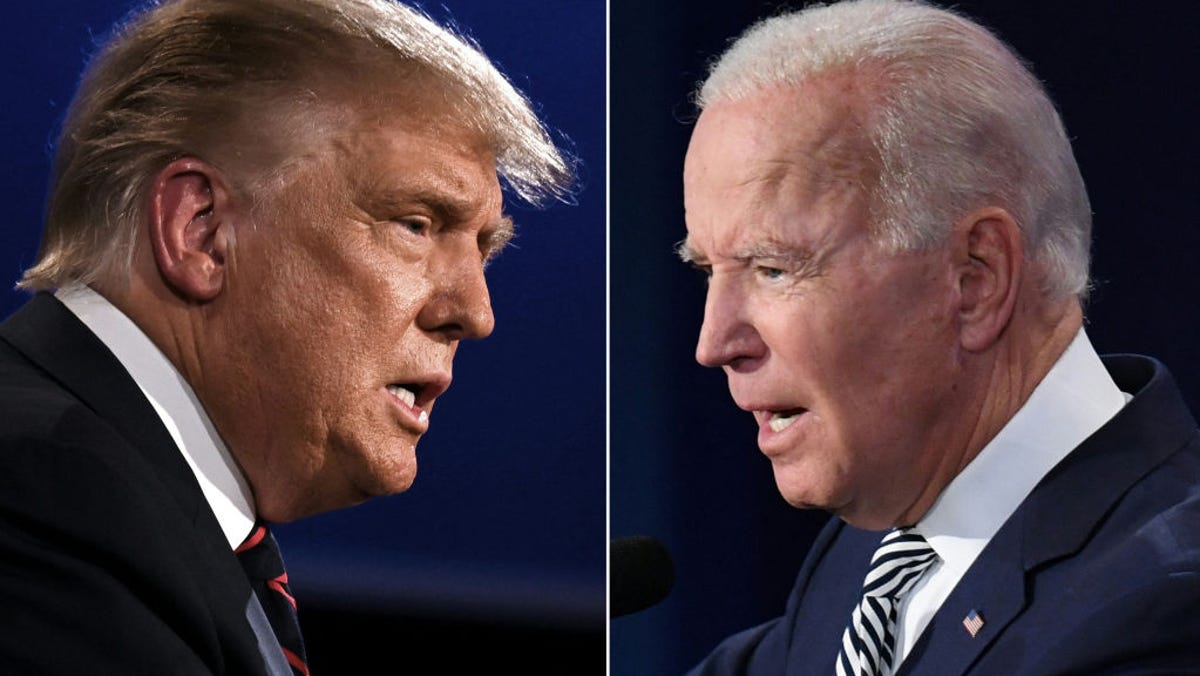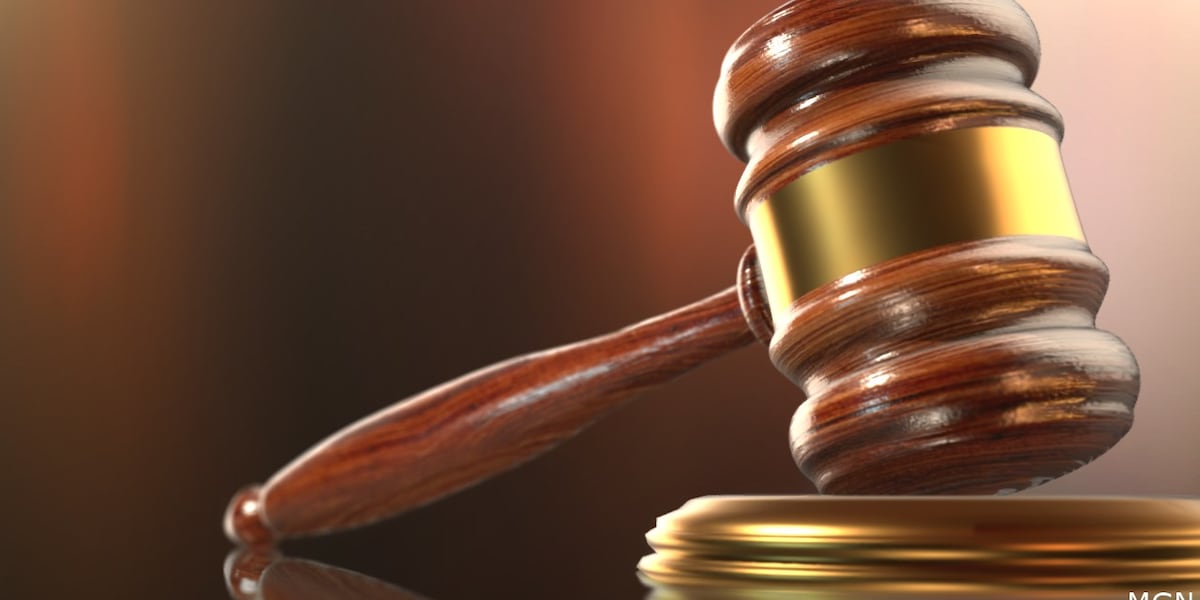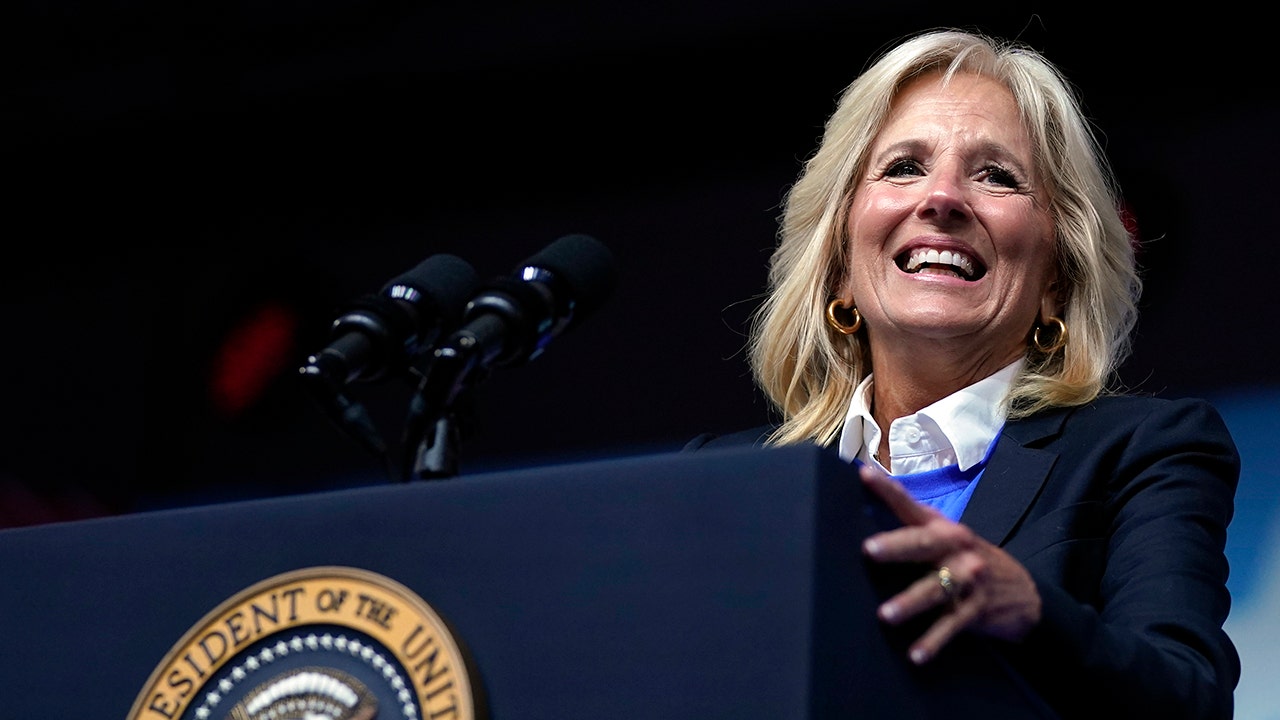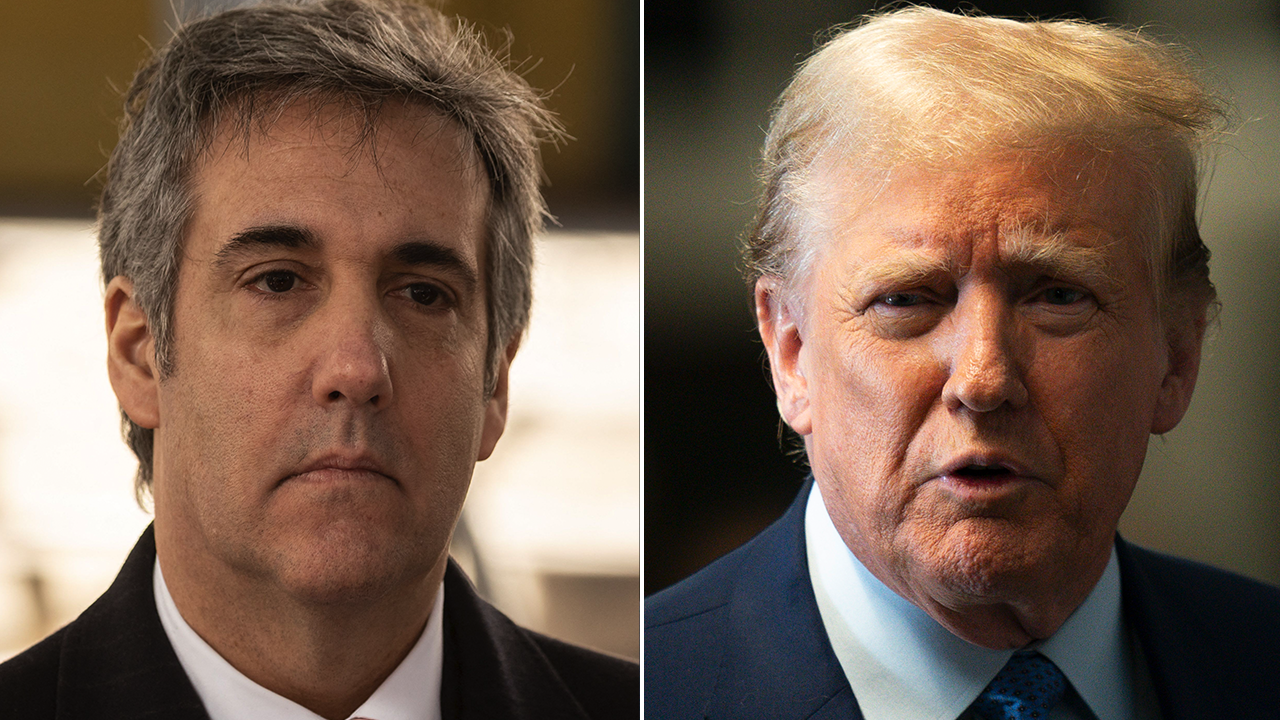World
‘Important step’: What we know about tentative US-Iran prisoner deal
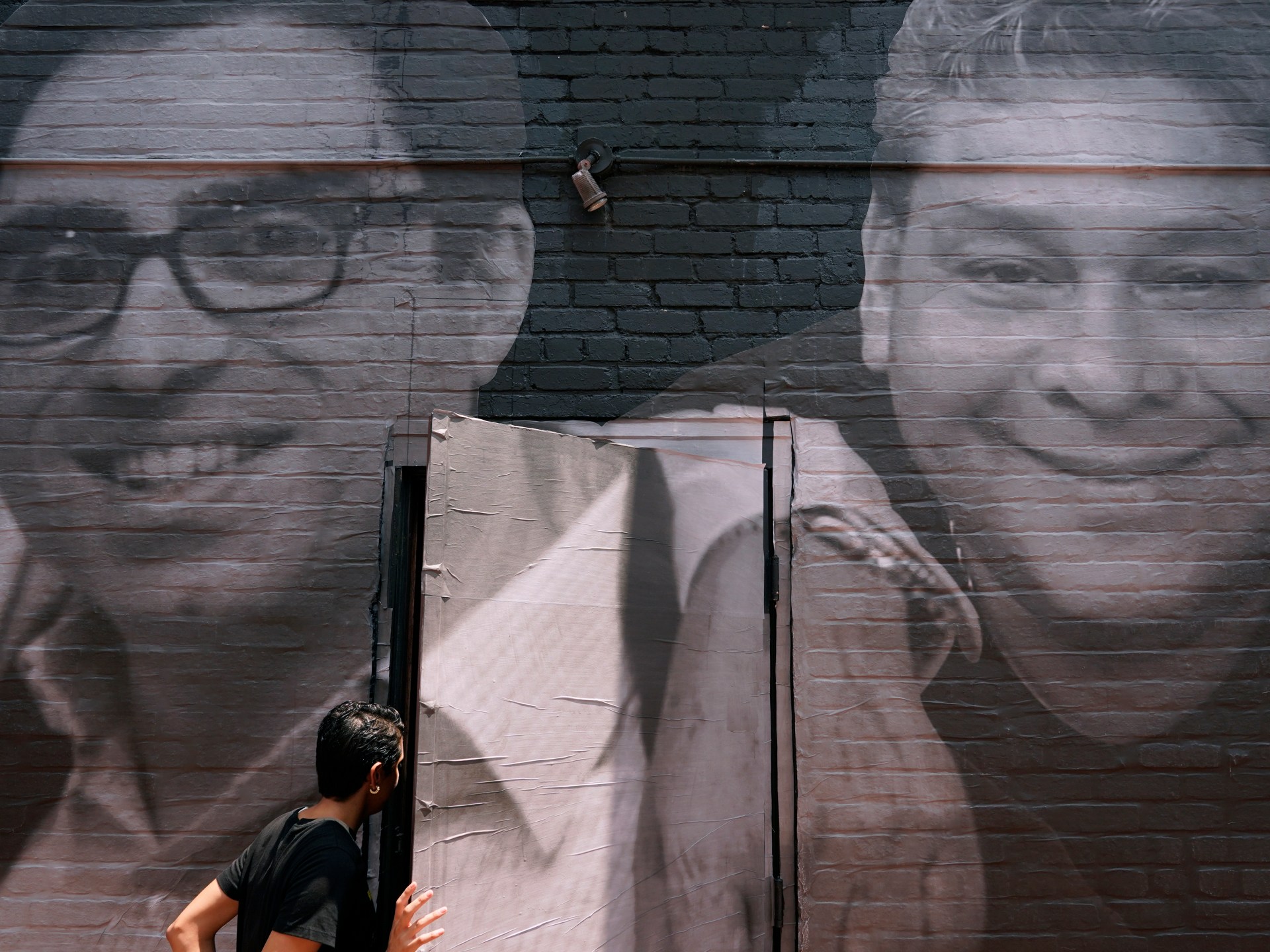
More details have slowly begun to emerge of a tentative deal that would see the United States and Iran engage in a prisoner swap in exchange for giving the Iranian government access to billions of dollars in frozen funds.
News of the agreement first broke on Thursday as US news outlets reported that four American detainees had been transferred from Tehran’s notorious Evin prison to house arrest in a hotel. A fifth prisoner had been released earlier.
Both US and Iranian officials later confirmed the first steps of the agreement but have given differing accounts of what it involves.
Barbara Slavin, a fellow at the US-based Stimson Center think tank, told Al Jazeera that the early details of the deal showed Tehran was at least partially willing to “de-escalate tensions” with Washington as it seeks a reprieve from crushing US sanctions.
She said that while the preliminary agreement “is an important step”, particularly for the families of the detainees, it is unlikely to represent a larger change in US-Iran relations.
“It doesn’t fundamentally change the nature of Iran’s relations with the United States or the international community,” Slavin said.
Here’s what we know so far about the deal:
What are the details?
Citing sources familiar with the agreement, The New York Times newspaper and several news agencies reported on Thursday that the deal, which has been months in the making, will see the eventual release of the five US prisoners.
Three of the prisoners were named as Siamak Namazi, Emad Sharghi and Morad Tahbaz. The families of the two others have withheld their identities, but they are said to be a scientist and a businessman.
Jared Genser, a lawyer for Namazi, welcomed the transfer to house arrest but said “there are simply no guarantees” about what happens next. “While I hope this will be the first step to their ultimate release, this is at best the beginning of the end and nothing more,” he said.
As part of the purported deal, the US will free five Iranian prisoners in return for the release of the detained Americans, the news outlets reported.
Iran also will be given access to about $6bn in oil revenue that was frozen in South Korea due to US sanctions. Under the scheme, the money would be transferred to Qatar to oversee.
Sources told several news agencies that Iran would be able to access the funds only for humanitarian purchases, such as food and medicine, and would not directly receive any money.
US Secretary of State Antony Blinken also said on Thursday that the funds would be in “restricted accounts” that can be accessed only for “humanitarian purposes”.
The restriction is an apparent attempt by the administration of US President Joe Biden to stem criticism that the released funds could be used to boost Iran’s government and weapons programme.
However, Iranian officials have offered a different characterisation, saying Tehran will decide how to use the funds.
The logistics of setting up a mechanism with Qatar also are expected to take weeks to sort out, given the complex nature of the scheme. Qatar worked with Oman and Switzerland in mediating the negotiations.
What has Iran said?
On Friday, Iran’s Ministry of Foreign Affairs said in a statement that the “process of releasing several billion dollars of Iranian assets which had been illegally frozen by the United States in South Korea has begun”, according to the state-run IRNA news agency.
It added: “Iran will determine how to use these assets, and they will be consumed to meet different needs of the country as determined by the related authorities.”
Iran’s semi-official Tasnim news agency said the funds were first to be converted from South Korean won into euros and then sent to an account in Qatar that Iran could access.
An earlier statement from Iran’s mission to the United Nations said Tehran and Washington “agreed to reciprocally release and pardon five prisoners”.
“The transfer of these prisoners … out of prison marks a significant initial step in the implementation of this agreement,” it said.
It remains unclear which Iranian prisoners are part of the tentative deal. The New York Times reported on Thursday that “a handful of Iranian nationals serving prison sentences for violating sanctions on Iran” would be released.
What has the US said?
Blinken has called the transfer of the prisoners “the beginning of the end of their nightmare and the nightmare that their families have experienced”.
Speaking on Thursday, the top US diplomat added, however, that “there’s more work to be done to actually bring them home”.
Blinken also denied that the deal amounted to “sanctions relief” for Iran.
“We will continue to enforce all of our sanctions. We will continue to push back resolutely against Iran’s destabilising activities in the region and beyond. … None of these efforts take away from that,” he said.
Still, Republicans quickly attacked the administration of Biden, a Democrat, as news of the potential deal emerged, saying it would ease economic pressure on Iran. Senator Tom Cotton accused Biden of a “craven act of appeasement” that would “embolden” Iranian leaders.
There has been no indication that the prisoner deal would spur movement on restoring the 2015 Iran nuclear accord, which saw Tehran scale back its nuclear programme in exchange for a lifting of international sanctions against its economy.
Former US President Donald Trump withdrew from the agreement unilaterally in 2018 and instead pursued a “maximum pressure” policy against Iran, heaping sanctions on the country.
While the Biden administration initially expressed optimism about restoring the pact, it has more recently dismissed prospects of a breakthrough after efforts to revive the deal collapsed. Biden also has continued to impose new sanctions on Tehran.
Who are the US prisoners?
Namazi, a businessman in his early 50s with dual US-Iranian citizenship, was detained in 2015 while visiting his family in Tehran.
Months later, his ailing father, Baquer, was detained after returning to Iran to visit his jailed son. They were both sentenced in 2016 to 10 years in prison for spying and cooperating with the US government, charges that Washington has rejected as false.
Baquer Namazi, a former Iranian provincial governor and former UNICEF official who also has dual citizenship, was put under house arrest in 2018 on medical grounds and left Iran last year for medical treatment.
Sharghi is also an Iranian-American businessman. He was first arrested in 2018 when working for the Saravan Holding tech investment company after moving with his wife from the US to Iran.
He was released on bail after eight months and cleared of spying and security-related charges but was banned from travelling. He was summoned by a separate court in 2020 and then sentenced to 10 years for espionage.
Tahbaz, an Iranian-American environmentalist who also holds British citizenship, was arrested in 2018. He was sentenced to 10 years in prison in 2019 for “assembly and collusion against Iran’s national security” and “contacts with the US enemy government … for the purpose of spying”.

World
What to know about Trump fixer-turned-foe Michael Cohen's pivotal testimony in the hush money trial
NEW YORK (AP) — Donald Trump’s hush money trial reached a pivotal moment Monday when Trump’s onetime loyal attorney and fixer, Michael Cohen, took the witness stand to testify against his former boss.
As the prosecution’s case enters its final stretch, Cohen is providing jurors with an insider’s account of hush money payments at the center of the trial — payments he says were directed by Trump to fend off damage to his 2016 White House bid.
Cohen is the most important witness for prosecutors, who are trying to prove that Trump engaged in a scheme to buy up and bury unflattering stories about himself to illegally influence the 2016 election.
Cohen is expected be on the stand for several days and face intense grilling by Trump’s attorneys, who have painted him as a liar who’s trying to take down the presumptive Republican presidential nominee. Trump has denied any wrongdoing in the case.
Here are some takeaways from Cohen’s testimony so far:
HIS RELATIONSHIP WITH TRUMP
Cohen spoke in glowing terms about his early days working for Trump, telling jurors he was surprised and honored when the former president first offered him a job. Cohen said he and Trump were so close in the decade Cohen worked for him that the two spoke in person or by phone multiple times every single day.
Cohen did everything from talking with the media to renegotiating bills on Trump’s behalf, including outstanding invoices from 50 vendors of Trump’s failed Trump University project. The praise he got from Trump afterward made him feel like he was “on top of the world,” he told jurors.
“The only thing that was on my mind was to accomplish the task and make him happy,” Cohen said, referring to Trump.
Cohen kept Trump’s contact list merged with his on his phone so he could call someone for him quickly. One of Cohen’s phones had more than 30,000 contacts.
He also lied and bullied on Trump’s behalf, he said. Part of his job included reaching out to reporters whose stories upset Trump, asking them to make changes or take them down — and sometimes threatening legal action. Asked if he had done so in a “strong and threatening manner,” Cohen said he did.
But overall, Cohen told jurors, the job was “fantastic.”
“It was an amazing experience in many, many ways,” he added. “There were great times. There were several less than great times.”
‘KEEP ME INFORMED’
Cohen portrayed Trump as a hands-on boss, who was deeply involved in the details and decisions of his company, the Trump Organization.
Prosecutors throughout the trial have been trying to elicit such testimony to support the idea that Trump would have known about the $130,000 hush money payment to porn actor Stormy Daniels and the subsequent reimbursement to Cohen. Trump denies Daniels’ claims that they had a sexual encounter in 2006.
Cohen testified that Trump wanted to be updated immediately about any developments regarding the tasks he assigned. Cohen said Trump had an “open-door policy” so executives could meet him in his office, without appointment, and keep him apprised of developments.
“When he would task you with something, he would then say, ‘Keep me informed,’ ‘Let me know what’s going on,’” Cohen testified. That was especially true “if there was a matter that was troubling to him.”
If Trump “learned of it in another manner, that wouldn’t go over well for you,” Cohen testified.
THE MCDOUGAL DEAL
Cohen described for jurors negotiations that led to former Playboy model Karen McDougal being paid $150,000 to squash a story about an alleged affair with Trump. Trump denies having sex with McDougal.
Cohen testified that he personally had no interest in acquiring the rights to McDougal’s story, telling jurors: “What I was doing was at the direction of and benefit of Mr. Trump.”
Cohen recounted immediately going to Trump after the National Enquirer alerted him about about McDougal’s story. Cohen said Trump told him to “make sure it doesn’t get released.”
Cohen also told jurors about a conversation he says he heard between Trump and National Enquirer publisher David Pecker in which the two discussed how much it would cost to suppress McDougal’s story.
“David stated it would cost $150,000 to control the story,” he said. Cohen said Trump then told the publisher: “No problem, I’ll take care of it.”
After the National Enquirer shelled out $150,000 to suppress McDougal’s story about Trump, Cohen testified that the tabloid’s publisher was hounding him to get Trump to reimburse him for the cost. He recounted meeting Pecker at his favorite Italian restaurant and the publisher being upset about not being repaid.
THE SECRET RECORDING
With Cohen on the stand, jurors again heard the audio recording he secretly made of a meeting with Trump in September 2016 in which they discussed the plan to purchase McDougal’s silence. In the recording, Trump can be heard saying: “What do we got to pay for this? One-fifty?”
Cohen testified that it was the only time that he had ever recorded a conversation with Trump. He said made the recording so Pecker, the National Enquirer publisher, could hear the conversation and be assured that Trump was going to pay him back.
Cohen testified that the recording abruptly cut off because he was receiving an incoming call to his phone, a claim substantiated by cell phone carrier records shown in court. Cohen said the number listed in the carrier records belonged to a bank official who was trying to get ahold of him.
Cohen said that the recording was not altered and sounded exactly the same as the day it was recorded. Prosecutors’ questions eliciting that testimony were meant to rebut a suggestion previously raised by the defense that Cohen may have altered the tape.
Earlier in the trial, Trump’s attorneys pressed a witness about the “gaps” in the handling of the phone after Cohen made the recording, along with the abrupt cut-off at the end of the tape.
___
Associated Press reporter Jake Offenhartz in New York contributed. Whitehurst and Richer reported from Washington.
World
Sickle cell patient offers hope to Ugandan community where disease is prevalent
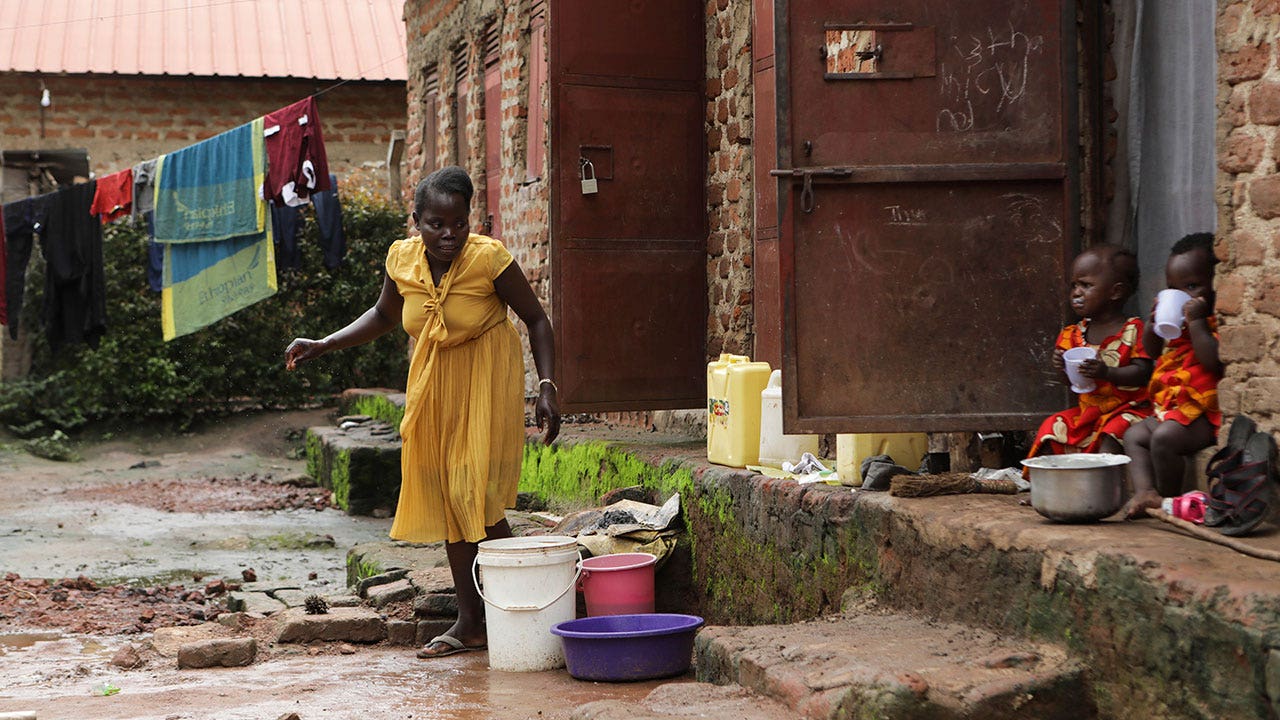
- Barbara Nabulo, a sickle cell disease patient, has emerged as a dedicated advocate for others facing the same condition in rural Uganda.
- Despite her own challenges with the disease, Nabulo serves as a counselor to fellow patients, offering them encouragement and hope.
- Nabulo regularly visits sickle cell patients in the hospital ward, providing them with guidance and reassurance.
Barbara Nabulo was one of three girls in her family. But when a sister died, her mother wailed at the funeral that she was left with just one and a half daughters.
The half was the ailing Nabulo, who at age 12 grasped her mother’s meaning.
“I hated myself so much,” Nabulo said recently, recalling the words that preceded a period of sickness that left her hospitalized and feeding through a tube.
‘REMARKABLE’ GENE-EDITING TREATMENT FOR SICKLE CELL DISEASE IS APPROVED BY FDA
The scene underscores the lifelong challenges for some people with sickle cell disease in rural Uganda, where it remains poorly understood. Even Nabulo, despite her knowledge of how the disease weakens the body, spoke repeatedly of “the germ I was born with.”
Barbara Nabulo cleans clothes at her home in Busamaga-Mutukula village in Mbale, Uganda, on April 25, 2024. Nabulo, a sickle cell disease patient, has emerged as a dedicated advocate for others facing the same condition. (AP Photo/Hajarah Nalwadda)
Sickle cell disease is a group of inherited disorders in which red blood cells — normally round — become hard, sticky and crescent shaped. The misshapen cells clog the flow of blood, which can lead to infections, excruciating pain, organ damage and other complications.
The disease, which can stunt physical growth, is more common in malaria-prone regions, notably Africa and India, because carrying the sickle cell trait helps protect against severe malaria. Global estimates of how many people have the disease vary, but some researchers put the number between 6 million and 8 million, with more than 5 million living in sub-Saharan Africa.
The only cure for the pain sickle cell disease can cause is a bone marrow transplant or gene therapies like the one commercially approved by the U.S. Food and Drug Administration in December. A 12-year-old boy last week became the first person to begin the therapy.
EX-NFL STAR TEVIN COLEMAN’S DAUGHTER ‘COULDN’T BREATHE ON HER OWN,’ PUT ON VENTILATOR AMID SICKLE CELL FIGHT
Those options are beyond the reach of most patients in this East African nation where sickle cell disease is not a public health priority despite the burden it places on communities. There isn’t a national database of sickle cell patients. Funding for treatment often comes from donor organizations.
In a hilly part of eastern Uganda that’s a sickle cell hot spot, the main referral hospital looks after hundreds of patients arriving from nearby villages to collect medication. Many receive doses of hydroxyurea, a drug that can reduce periods of severe pain and other complications, and researchers there are studying its effectiveness in Ugandan children.
Nabulo, now 37, is one of the hospital’s patients. But she approaches others like her as a caregiver, too.
After dropping out in primary school, she has emerged in recent years as a counselor to fellow patients, speaking to them about her survival. Encouraged by hospital authorities, she makes weekly visits to the ward that has many children watched over by exhausted-looking parents.
Nabulo tells them she was diagnosed with sickle cell disease at two weeks old, but now she is the mother of three children, including twins.
Such a message gives hope to those who feel discouraged or worry that sickle cell disease is a death sentence, said Dr. Julian Abeso, head of pediatrics at Mbale Regional Referral Hospital.
Some men have been known to divorce their wives — or neglect them in search of new partners — when they learn that their children have sickle cell disease. Frequent community deaths from disease complications reinforce perceptions of it as a scourge.
BONE MARROW TRANSPLANTS CAN REVERSE ADULT SICKLE CELL DISEASE
Nabulo and health workers urge openness and the testing of children for sickle cell as early as possible.
Abeso and Nabulo grew close after Nabulo lost her first baby hours after childbirth in 2015. She cried in the doctor’s office as she spoke of her wish “to have a relative I can call mine, a descendant who can help me,” Abeso recalled.
“At that time, people here were so negative about patients with sickle cell disease having children because the complications would be so many,” the doctor said.
Nabulo’s second attempt to have a child was difficult, with some time in intensive care. But her baby is now a 7-year-old boy who sometimes accompanies her to the hospital. The twin girls came last year.
Speaking outside the one-room home she shares with her husband and children, Nabulo said many people appreciate her work despite the countless indignities she faces, including unwanted stares from people in the streets who point to the woman with “a big head,” one manifestation in her of the disease. Her brothers often behave as if they are ashamed of her, she said.
Once, she heard of a girl in her neighborhood whose grandmother was making frequent trips to the clinic over an undiagnosed illness in the child. The grandmother was hesitant to have the girl tested for sickle cell when Nabulo first asked her. But tests later revealed the disease, and now the girl receives treatment.
“I go to Nabulo for help because I can’t manage the illness affecting my grandchild,” Kelemesiya Musuya said. “She can feel pain, and she starts crying, saying, ‘It is here and it is rising and it is paining here and here.’”
Musuya sometimes seeks reassurance. “She would be asking me, ‘Even you, when you are sick, does it hurt in the legs, in the chest, in the head?’ I tell her that, yes, it’s painful like that,” Nabulo said.
Nabulo said she was glad that the girl, who is 11, still goes to school.
The lack of formal education is hurtful for Nabulo, who struggles to write her name, and a source of shame for her parents, who repeatedly apologize for letting her drop out while her siblings studied. One brother is now a medical worker who operates a clinic in a town not far away from Nabulo’s home
“I am very happy to see her,” said her mother, Agatha Nambuya.
She recalled Nabulo’s swelling head and limbs as a baby, and how “these children used to die so soon.”
But now she knows of others with sickle cell disease who grew to become doctors or whatever they wanted to be. She expressed pride in Nabulo’s work as a counselor and said her grandchildren make her feel happy.
“At that time,” she said, recalling Nabulo as a child, “we didn’t know.”
World
Germany's Weber supports Macron’s call for European nuclear deterrent
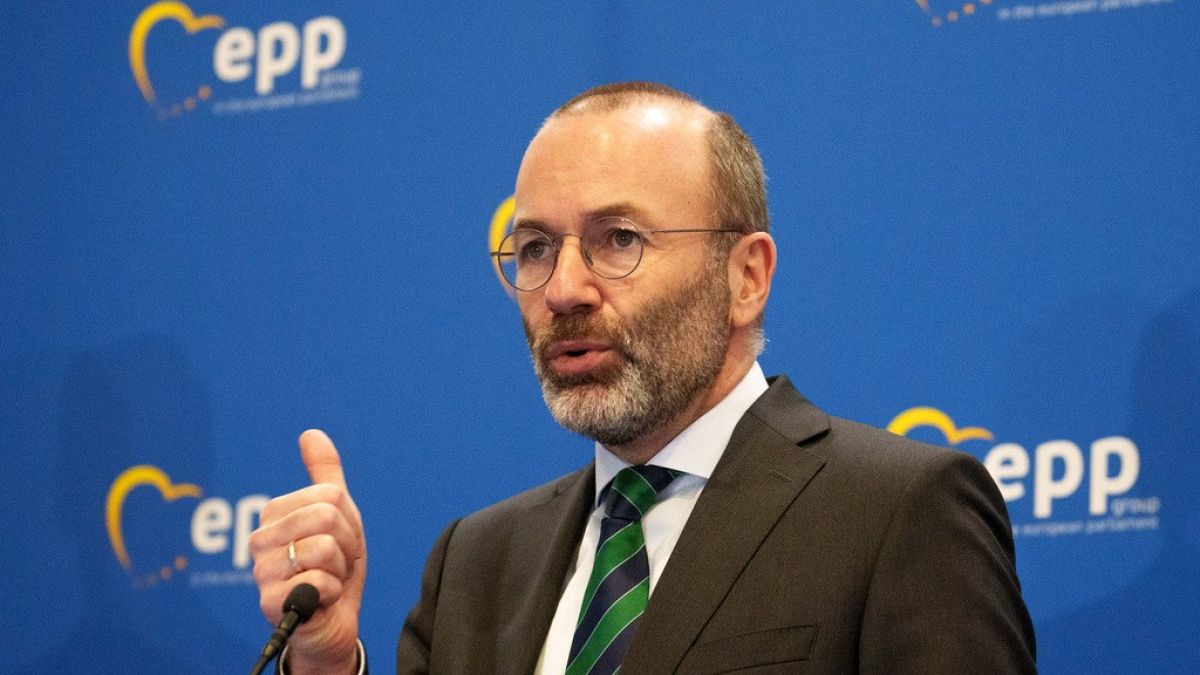
With fears over NATO’s credibility, the idea of a homegrown alternative is playing into Germany’s domestic political debate.
A French plan to offer a nuclear umbrella to Europe has met with support from the German MEP who heads the European People’s Party, Manfred Weber, playing into the domestic political debate ahead of June EU elections.
Russia’s invasion of Ukraine, and the prospect that a second Donald Trump presidency might weaken the transatlantic alliance, has raised the salience of having a homegrown alternative to NATO.
In a TV clip which issued on Thursday (9 May), Weber suggested he favoured plans put forward by French President Emmanuel Macron, and criticised left-wing Chancellor Olaf Scholz for his failure to engage.
“This is an offer of France which we must talk about,” Weber said on a panel hosted by Bavarian TV station BR24, after Macron proposed to extend security guarantees based on nuclear deterrence, adding: “I am disappointed that Olaf Scholz, the federal government, is voiceless, that there is absolutely no answer for this proposal.”
Macron “is broadening the conception of France’s national security from a purely territorial concept into a European one,” Weber said. “He is ready to say: the security order of France is attacked when Lithuania is attacked.”
In a wide-ranging speech on European policy in late April, Macron said France’s nuclear deterrent was an “indispensable element of the defence of the European continent”.
Fears over Europe’s ability to defend itself were raised after Trump suggested he wouldn’t leap to the rescue of allies who didn’t spend enough on their militaries, undermining the treaty commitments that underpin NATO.
France is the only remaining nuclear power within the EU, though it isn’t immediately clear what role Brussels, or MEPs such as Weber, might play in developing the idea.
The European Commission is attempting to coordinate military production by its members to help arm Ukraine, and its President Ursula von der Leyen has said she’ll make defence a central plank of a hoped-for second term in office.
But the EU also includes neutral members such as Ireland and Austria, and is precluded under its founding treaties from buying weapons directly.
In February, Scholz – a socialist who leads a coalition that also includes the green and liberal parties – told German newspaper the Süddeutsche Zeitung, “I don’t think much of this debate” concerning a European nuclear guarantee, citing NATO membership and the country’s decision not to seek its own atomic weapons.
Earlier this week, Russian President Vladimir Putin ordered tests of tactical nuclear weapons, in an apparent warning to Ukraine’s allies to back off.
-

 Education1 week ago
Education1 week agoHow Counterprotesters at U.C.L.A. Provoked Violence, Unchecked for Hours
-

 World1 week ago
World1 week agoBrussels, my love? Champage cracked open to celebrate the Big Bang
-

 Politics1 week ago
Politics1 week agoAustralian lawmakers send letter urging Biden to drop case against Julian Assange on World Press Freedom Day
-

 Politics1 week ago
Politics1 week agoHouse Dems seeking re-election seemingly reverse course, call on Biden to 'bring order to the southern border'
-
News1 week ago
A group of Republicans has united to defend the legitimacy of US elections and those who run them
-

 World1 week ago
World1 week ago‘It’s going to be worse’: Brazil braces for more pain amid record flooding
-

 Politics1 week ago
Politics1 week ago'Stop the invasion': Migrant flights in battleground state ignite bipartisan backlash from lawmakers
-

 World1 week ago
World1 week agoGerman socialist candidate attacked before EU elections
